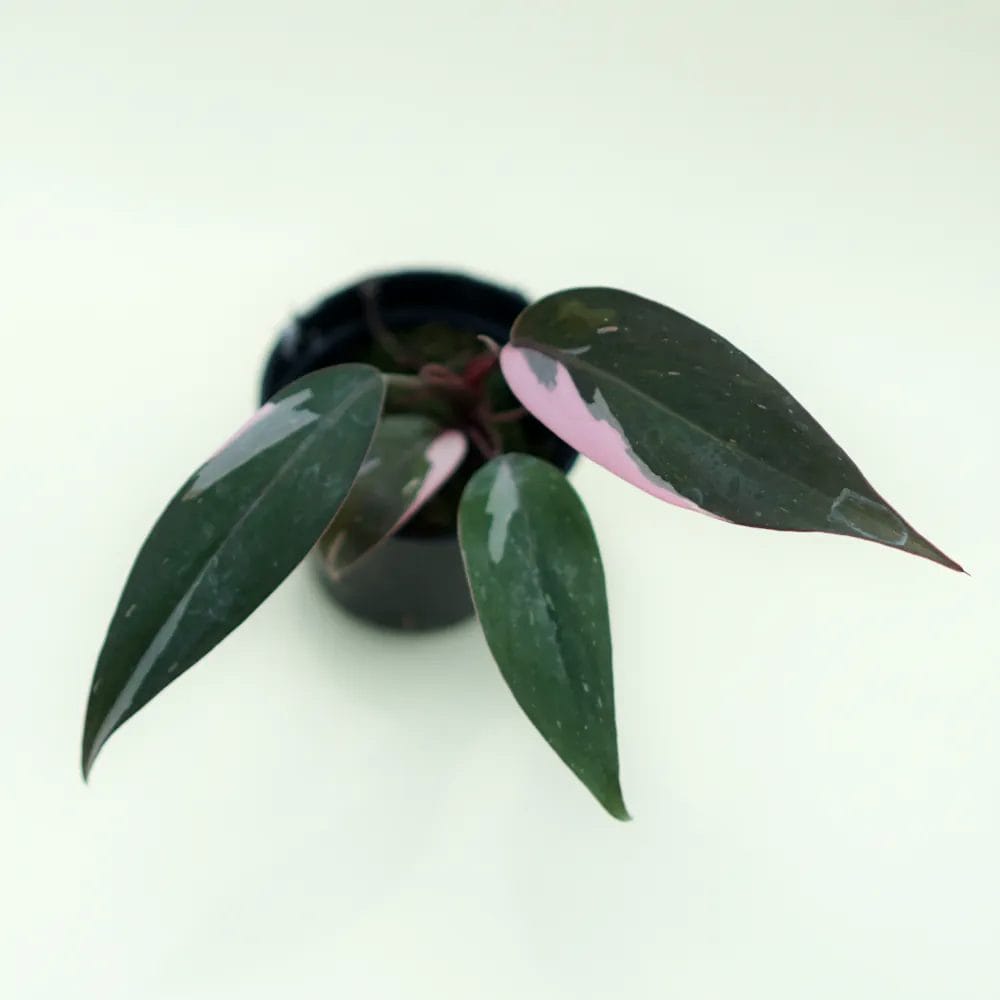The Philodendron Pink Princess, a rare and highly sought-after houseplant, is prized for its unique, variegated foliage. Native to South America, this stunning plant adds a touch of elegance to any indoor space.
If you don’t have this plants, you can buy philodendron pink princess ony for $30. But, before buying the plants, you need to know about them first.
So, in this guide, we’ll share everything you need to know about taking care of Philodendron Pink Princess, including its history, propagation, and care tips.
The Origin and Characteristics of the Pink Princess
The Philodendron Pink Princess is a hybrid plant created by selective breeding. It’s a member of the Araceae family, characterized by its heart-shaped leaves and pink variegation. The vibrant pink coloration is due to a genetic mutation, making each leaf a work of art.
There are three points what makes people love philodendron pink princess
- Heart-shaped leaves with dark green and pink variegation
- New leaves emerge with a bright pink hue, maturing into a deeper shade
- Can grow up to 2 feet in height indoors
Essential Care Tips for Philodendron Pink Princess
Providing the proper care will ensure your Pink Princess thrives and maintains its beautiful variegation.
Light Requirements
The Philodendron Pink Princess prefers bright, indirect light. Too much direct sunlight can cause the leaves to scorch, while insufficient light may result in decreased variegation.
Watering
Water your Pink Princess when the top 1-2 inches of soil feel dry to the touch. Overwatering can lead to root rot, so it’s essential to use a well-draining potting mix and a container with drainage holes.
Temperature and Humidity
Maintain a consistent temperature between 65-80°F (18-27°C) and a humidity level of 60% or higher for optimal growth. A humidifier or pebble tray can help maintain humidity levels.
Fertilizing
Fertilize your Pink Princess with a balanced liquid fertilizer diluted to half-strength every 4-6 weeks during the growing season. Reduce fertilization to once every 8-10 weeks during the winter months.
Pruning and Training
Regular pruning will encourage bushier growth and maintain your plant’s shape. Remove any yellow or damaged leaves as needed. To train your Pink Princess to grow vertically, provide a moss pole or trellis for support.
Propagation Techniques for the Philodendron Pink Princess
Propagating the Pink Princess is a straightforward process, whether you choose to do so via stem cuttings or air layering.
Stem Cuttings
- Select a healthy stem with at least two leaves and an aerial root.
- Use a sterilized pair of scissors or a sharp knife to make a clean cut below the aerial root.
- Place the cutting in a jar of water or moist sphagnum moss and keep it in a warm, well-lit area.
- Change the water or mist the moss regularly to maintain moisture.
- After a few weeks, roots will begin to develop. Once they reach about 2 inches in length, transfer the cutting to a well-draining potting mix.
Air Layering
- Choose a healthy stem with an aerial root and make a small incision just below it.
- Wrap the incision with moist sphagnum moss and cover it with plastic wrap to maintain humidity.
- Secure the plastic wrap with a string or twist tie.
- Keep the moss moist by misting it regularly.
- After a few weeks, roots will form. Remove the plastic wrap and moss, then cut the stem below the new roots and pot it in a well-draining mix.
Repotting Your Philodendron Pink Princess
Repotting your Pink Princess promotes healthy growth and provides fresh nutrients. Follow these steps for successful repotting:
- Choose a pot that is 1-2 inches larger in diameter than the current pot.
- Prepare a well-draining potting mix with a blend of peat, perlite, and orchid bark.
- Gently remove the plant from its current pot, being careful not to damage the roots.
- Place the plant in the new pot, ensuring the root ball sits slightly below the rim.
- Fill the pot with the fresh potting mix and gently firm it down around the roots.
- Water the plant thoroughly to settle the soil.
Repot your Pink Princess every 1-2 years or when roots begin to grow out of the drainage holes.
Common Pests and Diseases Affecting the Philodendron Pink Princess
Keeping your Philodendron Pink Princess healthy involves vigilance against potential pests and diseases. Here are some common issues and how to address them.
Pests
- Mealybugs: Small, white, cottony insects that feed on plant sap. Remove them with a cotton swab dipped in rubbing alcohol or treat the plant with an insecticidal soap.
- Spider mites: Tiny, spider-like creatures that create fine webs on leaves. Treat the infestation by wiping down the leaves with a damp cloth and applying a miticide or insecticidal soap.
- Aphids: Small, pear-shaped insects that feed on plant sap. Wash them off with a strong stream of water or use insecticidal soap.
Diseases
- Root rot: A fungal disease caused by overwatering. Signs include yellowing leaves and a foul smell. To treat, remove the affected roots, let the plant dry out, and repot in fresh, well-draining soil.
- Bacterial leaf spot: Causes brown, water-soaked spots on leaves. Remove affected leaves and avoid splashing water on the foliage when watering.
Supporting Philodendron Pink Princess Conservation
Due to the popularity of the Philodendron Pink Princess, it’s crucial to support conservation efforts and purchase plants from reputable nurseries like labijo.id. By doing so, you contribute to the preservation of this beautiful species for future generations to enjoy.
Conclusion
The Philodendron Pink Princess is an exquisite addition to any indoor garden. With proper care and attention, your Pink Princess will reward you with stunning variegated foliage and vigorous growth.
Follow the cultivation tips, propagation methods, and care guidelines outlined in this comprehensive guide to ensure your plant remains healthy and beautiful.




